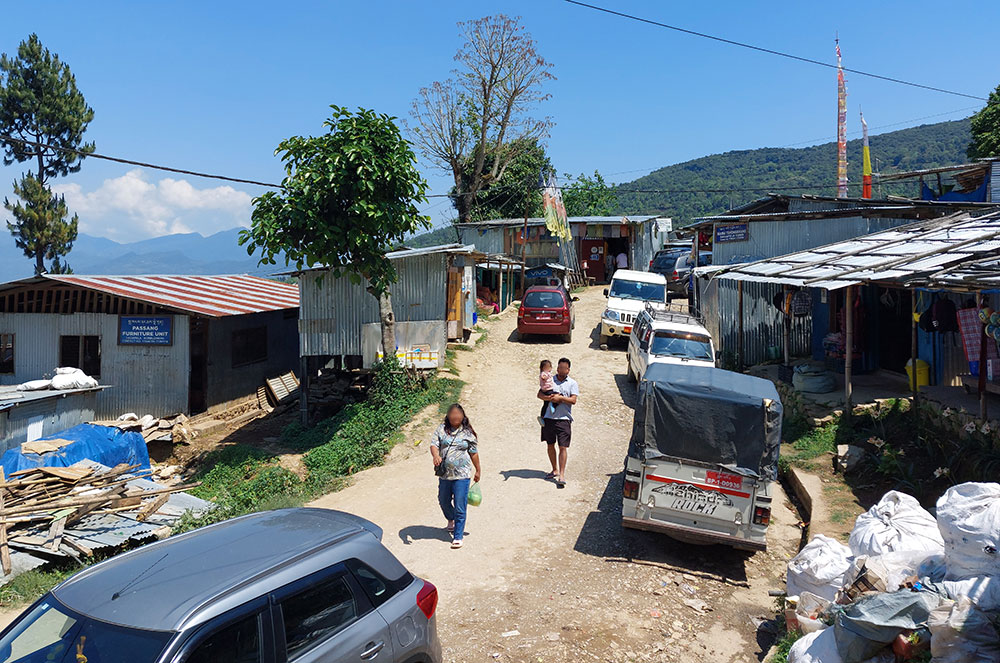Choki Wangmo
After more than a year of receiving land ownership certificates for the new Dagapela town, the progress of town development in the area has been slow. The township development planning works, which started in 2016, are dragging on.
A few years ago, plot owners complained that the dzongkhag administration took time to issue the land certificates. Once they received the plots, they then said that the construction costs were high due to the pandemic.
While officials from the dzongkhag administration say that plot owners can start construction soon, it is uncertain as to when the new town would come up. The old Dagapela town today wears a dilapidated look as shopkeepers operate their businesses from temporary CGI sheet shelters.
The situation is expected to worsen as the monsoon approaches, bringing heavy rainfall and heat. With the opening of the Dagapela-Dalbari secondary national highway, shopkeepers say that they are losing customers to other towns.
Of the 332 plot owners granted land certificates last February in Dagapela, 36 received the plots on kidu in town. Currently, none of them can start construction in the new town. Earlier, the dzongkhag approved two types of map designs based on the size of the plot, issuing permits based on the proposals received from individual plot owners.
While most of the plot owners said that it was difficult to avail loan services for the construction, it is learned that they are hesitant as the size of plots they received was too small to accommodate permanent structures. Some of the plot sizes are less than a decimal.
A garment shop owner in the town, Dhan Maya Monger, says that she might be able to construct a house on her 4.6-decimal land in the new town by September. “The sales have decreased. I don’t know if I can avail of housing loans.”
According to revised map prototypes, she is eligible to construct a two-storied house. The dzongkhag administration recently categorised the maps into three types depending on the plot size—one-storey house for plots below 2.5 decimal, two-storey for those above 2.5 decimal, and three-storey for those above 4.5 decimal. The owners received plots according to the size of their former structures or shops.
One decimal of plot is equal to 500 sq feet.
“I haven’t constructed huge structures till date. It seems risky, and I am not confident,” the shopkeeper said. Nado Rinchen, a town resident for the past three decades, said that Nu 500,000 would not be enough to construct a decent two-storey home. “I think it would be challenging without loans.”
Plot owners said that they are eligible for housing loans only once the foundation has been laid.
“We don’t have savings to start the construction,” one said.
Some said that there was a need to provide road and water facilities in the new town area so that construction would be easier and faster.
“The new town area is steep. The land needs to be developed with protection walls to prevent slides,” another added.
The new town area in Dagapela is currently covered in thickets, making it difficult for plot owners to start construction. Despite the small area, town representative Gangaram Chuwan has expressed concerns that if everyone started construction at the same time, it would cause congestion and leave no space for storing construction materials.
However, Tsendagang Gup Bal Bdr Rana has reassured plot owners that road facilities are available in the new town areas and that the water supply will be completed soon. The Bank of Bhutan has agreed to provide housing loans, but those with plot sizes below 2.5 decimal are not eligible for loans.
As plot owners sharing the same plots were hesitant to construct houses together, the dzongkhag has now permitted plot owners to construct houses individually on their own plots, even on a decimal land. However, the dzongkhag thridzin has expressed concerns that this may make the town look unsightly.
The Dagapela Local Area Plan spans over 380 acres and is composed of three phases.
Phase I and III are designated as commercial and residential areas, while Phase II is designated as industrial area.


